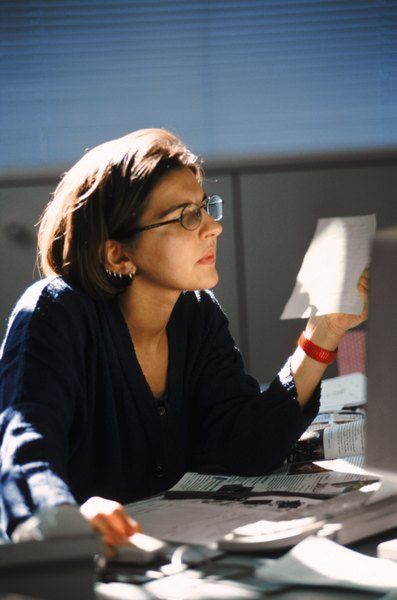Dow Futures Vs. Fair Value
Futures can cause confusion if you don't compare them to fair value.
John Foxx/Stockbyte/Getty Images
When you see on a morning financial program that the DOW futures are up, you may be tempted to assume that means the market opening will be up as well. But the term "futures" hints at its underlying meaning -- it's an estimate of a stock's future worth based on a best-guess prediction of the stock's movement. "Fair value" is a determination that's extrapolated from a stock's characteristics, including its existing market value and its estimated futures value.
Tip
A stock's actual futures price will not always match its theoretical futures price because its fair value fluctuates at the direction of short-term supply and demand.
Where Dow Futures Come From
Investors make predictions about the direction of the Dow Jones Industrial Average. If they think the 30 stocks in that average will move in a certain direction, they can issue a futures contract, which is a promise to buy or sell the DOW stocks at a future date.
The average of all of these futures contracts results in a futures figure. For example, you might hear a reporter say that the DOW futures are up 30. According to CNN Money, 1 point above or below fair value equals 8 points on the Dow Jones Industrial Average as trading begins. If futures are up 30, for example, that would indicate traders expect the DOW to go up eight times 30, or 240 points.
Adding Borrowing Costs
Banks and brokerages calculate the cost of borrowing money if you actually had to buy all of the DOW stocks. This interest expense is part of what gets added to fair value. That means that if a trader borrows money to buy stocks, he would not make as much money as if he had used cash. Since the likelihood of using cash for that large a purchase is low, the cost of borrowing is calculated in the fair value figure, which will diminish the actual futures value.
Adding Dividends
Any stocks that pay dividends on the DOW affect fair value. Investment banks and brokers calculate the dividends a person would receive from owning the DOW 30 stocks, and subtract those dividends from the futures figure. Keep in mind that when a stock pays a dividend, it tends to go down in value by the same amount as the dividend it paid. It becomes worth less because the company used profits to pay dividends.
How Fair Value Affects Futures
Once banks and brokers calculate interest costs and dividends, they establish a fair value number, such as plus 10, for example. That means if the futures are plus 5 for the morning, and the fair value number is plus 10, then stocks could actually open lower. The futures contracts are below the fair value number. Conversely, if futures are plus 30 and fair value is plus 10, futures are above fair value and stocks may open higher.
References
Writer Bio
Kevin Johnston writes for Ameriprise Financial, the Rutgers University MBA Program and Evan Carmichael. He has written about business, marketing, finance, sales and investing for publications such as "The New York Daily News," "Business Age" and "Nation's Business." He is an instructional designer with credits for companies such as ADP, Standard and Poor's and Bank of America.

